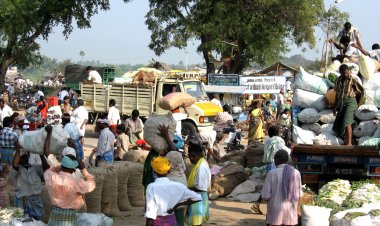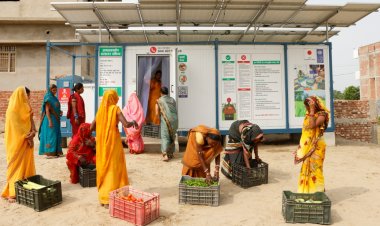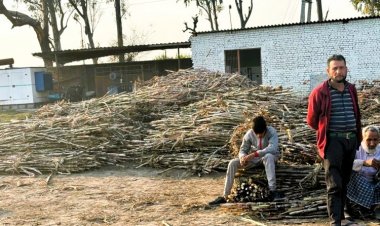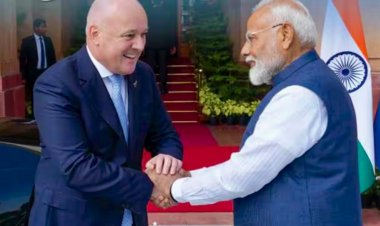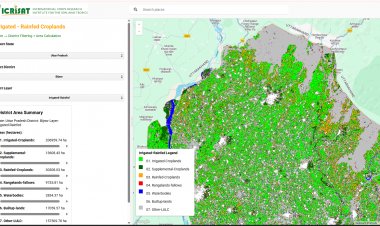India’s foodgrains exports under WTO scanner
During the deliberations in the Committee on Agriculture, several countries, including Japan, the Russian Federation, and the US, have sought clarifications from India as to whether it was adhering to the conditions included in the Bali Ministerial Decision regarding Public Stockholding of Foodgrains of 2013. This Ministerial Decision was aimed at reinforcing AoA’s strict discipline on countries implementing domestic food security programmes using public stockholding of foodgrains, such as India’s PDS.

India’s merchandise exports reached a milestone in 2021-22, crossing the $400bn mark for the first time. Provisional figures peg exports at nearly $420bn, over 27 per cent higher than the previous peak of $330bn reached in 2018-19.
What is remarkable about the export performance is that every major sector of the economy has made a definitive contribution to this burgeoning export basket. In agriculture, several non-traditional commodities have led the export surge; for instance, non-basmati rice and wheat, both commodities have seen record levels of exports. In the recent past, non-basmati rice exports were a third to one-half of India’s rice exports, but in 2021-22, this had increased to nearly two-thirds. Wheat exports were $60mn in 2019-20, but in the previous fiscal, exports were over $2bn.
India has, thus, consolidated its position in the global markets for these commodities. According to data provided by the United States Department of Agriculture (USDA), India’s share in global exports of rice has increased from about 22 per cent in 2018-19 to 40 per cent in 2021-22, while in the case of wheat, India’s share now stands at 5 per cent as against 0.3 per cent in 2019-20. Equally impressive is the increase in India’s share in sugar exports, which has increased to over 11 per cent as against 3.4 per cent in 2017-18. Record levels of foodgrains output expected for the seventh consecutive year could push agricultural exports even higher this year.
However, this is where the good news ends, as India’s agricultural exports are under intense scrutiny by the World Trade Organization (WTO). In 2019, Australia, Brazil, and Guatemala complained to WTO’s dispute settlement body that the Central government was implementing several subsidy schemes for promoting sugar exports. The complainants argued that by implementing these subsidy schemes, the government had violated the rules of WTO’s Agreement on Agriculture (AoA), which prohibit the use of export subsidies. In December 2021, the dispute settlement panel adjudicating on the dispute gave its ruling against India.
A much bigger problem is that India’s foodgrains exports are under the scanner in the WTO. During the deliberations in the Committee on Agriculture, several countries, including Japan, the Russian Federation, and the United States (US), have sought clarifications from India as to whether it was adhering to the conditions included in the Bali Ministerial Decision regarding Public Stockholding of Foodgrains of 2013. This Ministerial Decision was aimed at reinforcing AoA’s strict discipline on countries implementing domestic food security programmes using public stockholding of foodgrains, such as India’s public distribution system (PDS). According to the AoA, countries operating such food security programmes are allowed to acquire and release foodgrains at administered prices (or, minimum support prices (MSP) in the case of India), but they can do so only when they include the difference between the acquisition price of foodgrains and their “external reference prices”, namely, the international prices prevailing during 1986-88, in their subsidies’ bill. According to the AoA, subsidies that developing countries like India provide cannot exceed 10 per cent of their value of agricultural production. If India’s food subsidies provided through the PDS are taken together with the subsidies granted to farmers in the form of MSP and input subsidies, its subsidies bill will surely exceed the 10 per cent threshold.
The provisions in the AoA regarding public stockholding are patently illogical on at least two counts. First, the minimum support prices that India currently offers on identified products are compared with their international prices prevailing during 1986-88 to measure the extent of subsidies granted. India has been arguing that this criterion needs to be amended either by selecting “external reference prices” of a more recent period or by accounting for commodity price inflation. Secondly, including food subsidies granted to the undernourished and production-related subsidies to the farmers in a single discipline makes little sense. This is one of the glaring examples of how the European Union (EU) and the US wrote the WTO rules on agriculture that discriminate against the interests of developing countries.
It was fairly obvious from the day the then government decided to implement the National Food Security Act (NFSA) and to provide subsidized food to almost two-thirds of the country’s population that AoA’s rules on public stockholding militate against India’s interests. However, in the Bali Ministerial Conference in 2013, the WTO members came to an agreement that even if India breaches the subsidy threshold of 10 per cent while implementing the NFSA, no dispute would be initiated. This so-called “peace clause” was confirmed in 2015, and it allows implementation of the NFSA until a “permanent solution” is found to firewall India’s PDS from AoA rules.
However, the “peace clause” included an important condition, namely the publicly held stocks should not be used to “distort trade or adversely affect the food security of other Members”, which implies that India cannot export from these stocks. WTO members have sought clarification from India as to whether the Food Corporation of India’s (FCI) Open Market Sales Scheme, under which wheat and rice are released in the open market from time to time at predetermined prices, are triggering India’s exports. In other words, are India’s exports of foodgrains, especially those of wheat and rice, taking place from the stocks held by the FCI? These questions have increased since India’s foodgrains exports have increased, which shows much higher levels of scrutiny by other WTO members. The government must develop a strategy to respond to these challenges.
(Dr Biswajit Dhar is a Professor at the Centre for Economic Studies and Planning, School of Social Sciences, Jawaharlal Nehru University. The views expressed here are his own.)



 Join the RuralVoice whatsapp group
Join the RuralVoice whatsapp group

















